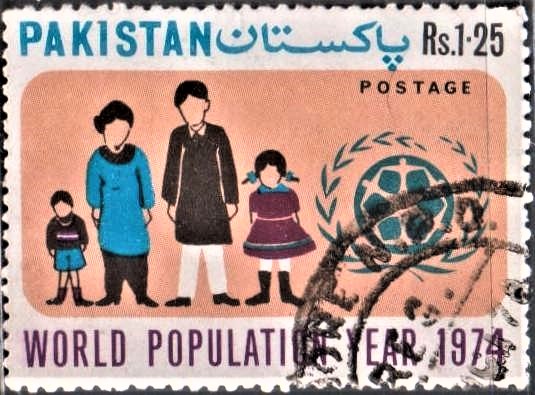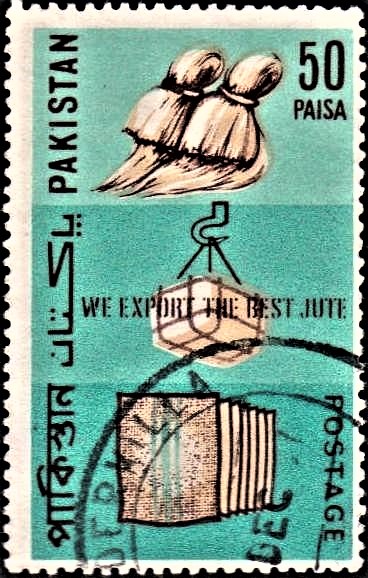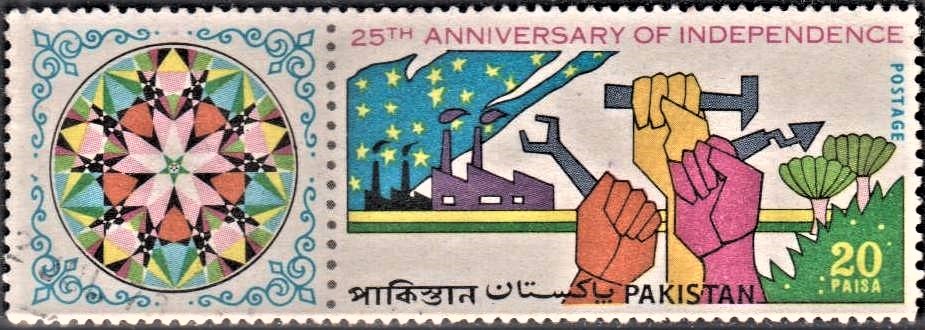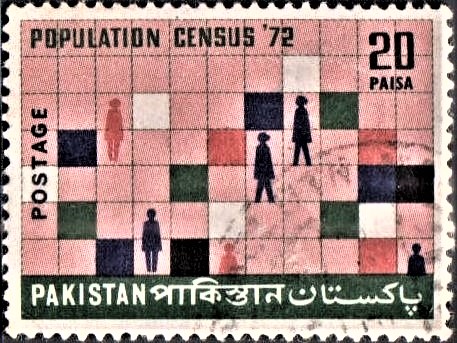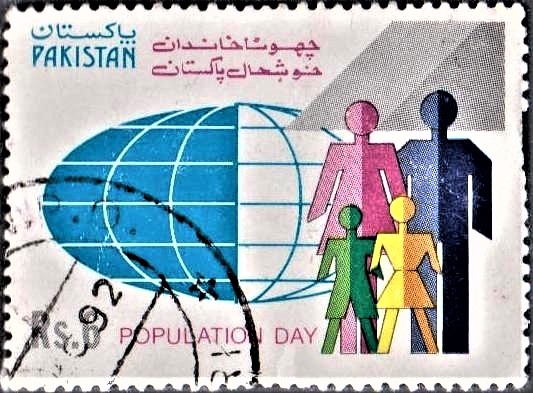
Pakistan on Population Day 1992
A commemorative postage stamp on the Population Day :
 Issued by Pakistan
Issued by Pakistan
Issued on Jul 25, 1992
Issued for : To focus world attention on the alarming growth of population, Pakistan Post Office is issuing a special postage stamp of Rs. 6/- denomination on ‘Population Day’ on July 25, 1992.
Designer : Syed Ali Afsar (PSPC)
Type : Stamp, Postal Used
Denomination : Rs. 6/-
Colour : Multi colour
Size of Stamp : 44.5 x 32.5 mm
Size of Print : 40.5 x 28.5 mm
Perforation : 13 C
Paper : 102 gsm dual purpose coated PVA gum
Quantity : 2 million
Number of stamps in a sheet : 25 (5 x 5 rows)
Process of Printing : Litho Offset
Printers : Pakistan Security Printing Corporation
About :
- Today we are living in a world of 5.4 billion people. By 2001 another billion will be added. A little over 13 years from now 6.5 billion people will inhabit the earth. Population may not level off until its growth is checked in the developing countries.
- The latest growth is often in the least developed countries – those least equipped to sustain increasing demands for food, clean water, health care, housing, education and other necessities.
- Many of the bigger cities are growing twice as fast as the rest of the world population. They are becoming a threat to the health, environment, socio-economic development.
- Poverty, population growth and environmental destruction mean more pressure for migration.
– 1.2 billion people live in absolute poverty.– The 1990s will see the largest increase in the population of developing countries of any decade of history.
– Poverty and population growth combine for environmental degradation.
- Pakistan – a developing and one of the most populated country – ranks at No. 8 in respect of population. With 16.6 million population in 1901, it reached 32.5 million at the time of independence in 1947. Today it is estimated that the population of Pakistan has risen to the tune of 117.3 million. During the same period, 1901-1991, the world population grew two times, the population of developing countries increased four times and the population of Pakistan increased six times.
- If the population continues to grow at the same rate, it will surpass 150 million mark by the year 2000. This means that the population of Pakistan will increase nine folds during the current century (1901-2000) as compared to the population of other developing countries will increase six folds.
- The improved health facilities in Pakistan have resulted in steep decline of death rate over the last 80 years while the birth rate has remained largely un-changed.
- The total fertility rate in Pakistan is about 5.9 which means that on an average each woman has six children during her reproductive life span. This rate is among the highest in the world, however, death rate has declined quite dramatically during this century largely due to the introduction of modern antibiotics, the success of public health and sanitation programmes.
- The difference between the birth and death rate is the rate of natural increase. In the beginning of the century, the population of areas, now comprising Pakistan, was growing at less than one percent per year. Since the birth rate has remained high, while the death rate has declined, the rate of growth of population increased to over 3% per year. It is quite visible that if the birth rate remains high while the death rate continues to decline, the growth rate of population could go even higher to perhaps 3.5% per year.
- As a result of rapid growth, the population of Pakistan is now composed primarily of young people. In Pakistan, more than 44% of population is under the ages of 15 and 52% of the population is between the ages of 16 and 64.
- Presently, due to over population, Pakistan is facing a lot of problems like poverty, illiteracy, un-employment, lack of housing facilities, lack of schools/colleges etc. The situation thus cropped up has already driven us to frustration, aggression, drug addiction etc.
- Realising the importance of this universal issue, the United Nations has stated that the World Population Day will be observed on July 11, 1992.
- July 11, is World Population Day (being observed on July 25, in Pakistan due to Ashura Muharram) – a day set aside to reflect on issues of tremendous importance which affects every-one living on this planet.
- Accessible family planning service is needed more than ever before to slow down the population growth and meet the reproductive needs of the human race.
- Family planning is one the cheapest developing means available, and also safer to use. The family health benefits and freedom of choice it brings to women, have contributed to the rising voluntary adoption rate from 10% of couples in 1960 to 51% today.
- Let us join hands in conveying the message to the masses that family planning is a basic human right and it guarantees the health of the family at large and welfare of mother and child in particular.
- It is high time that we realised the importance of the problem and respond to its needs by making every citizen aware that whatever is our cause is a lost cause without population planning.
- Contributed by : Ministry of Population Welfare, Government of Pakistan, Islamabad.
- Issued by The Director General, Pakistan Post Office, Islamabad-44000.



